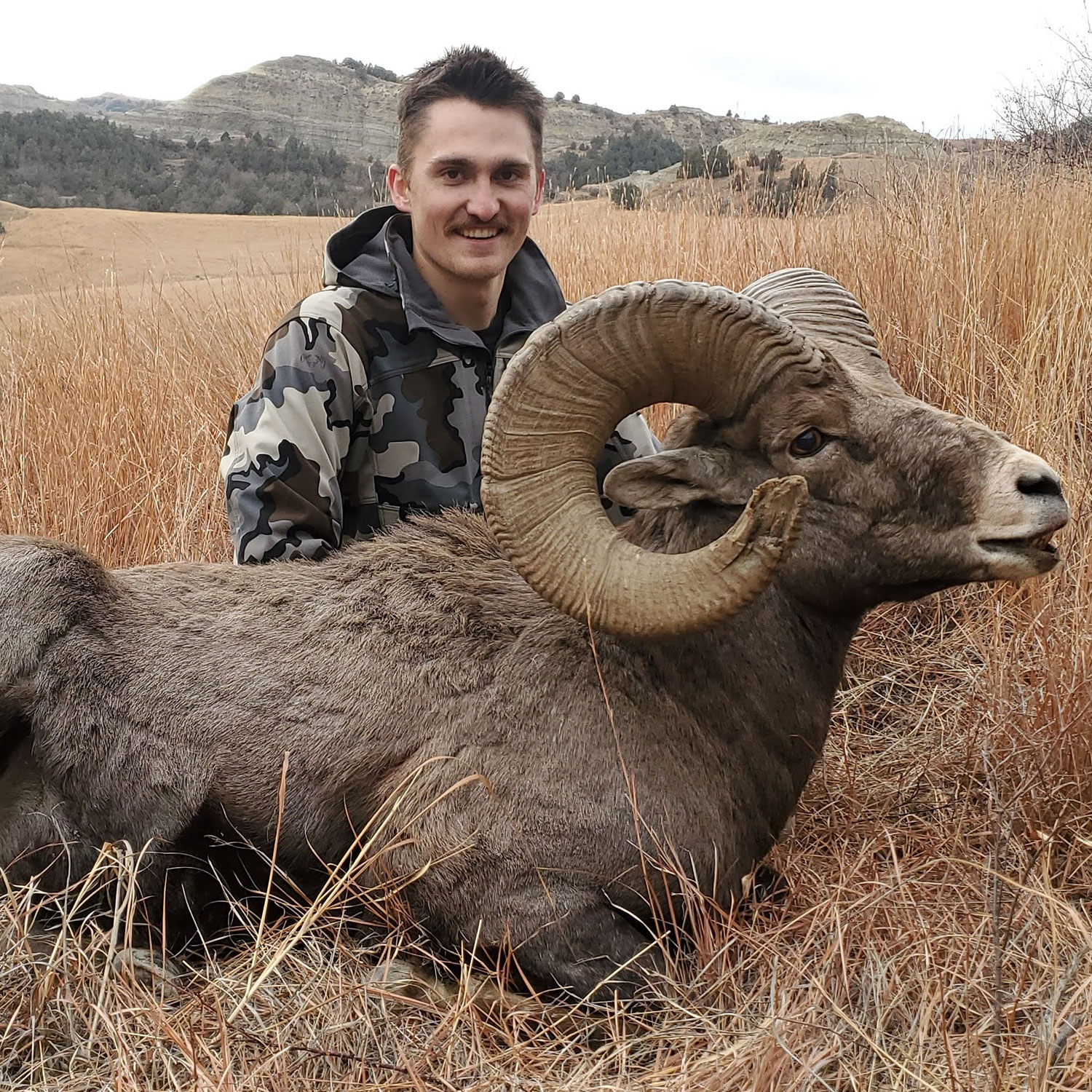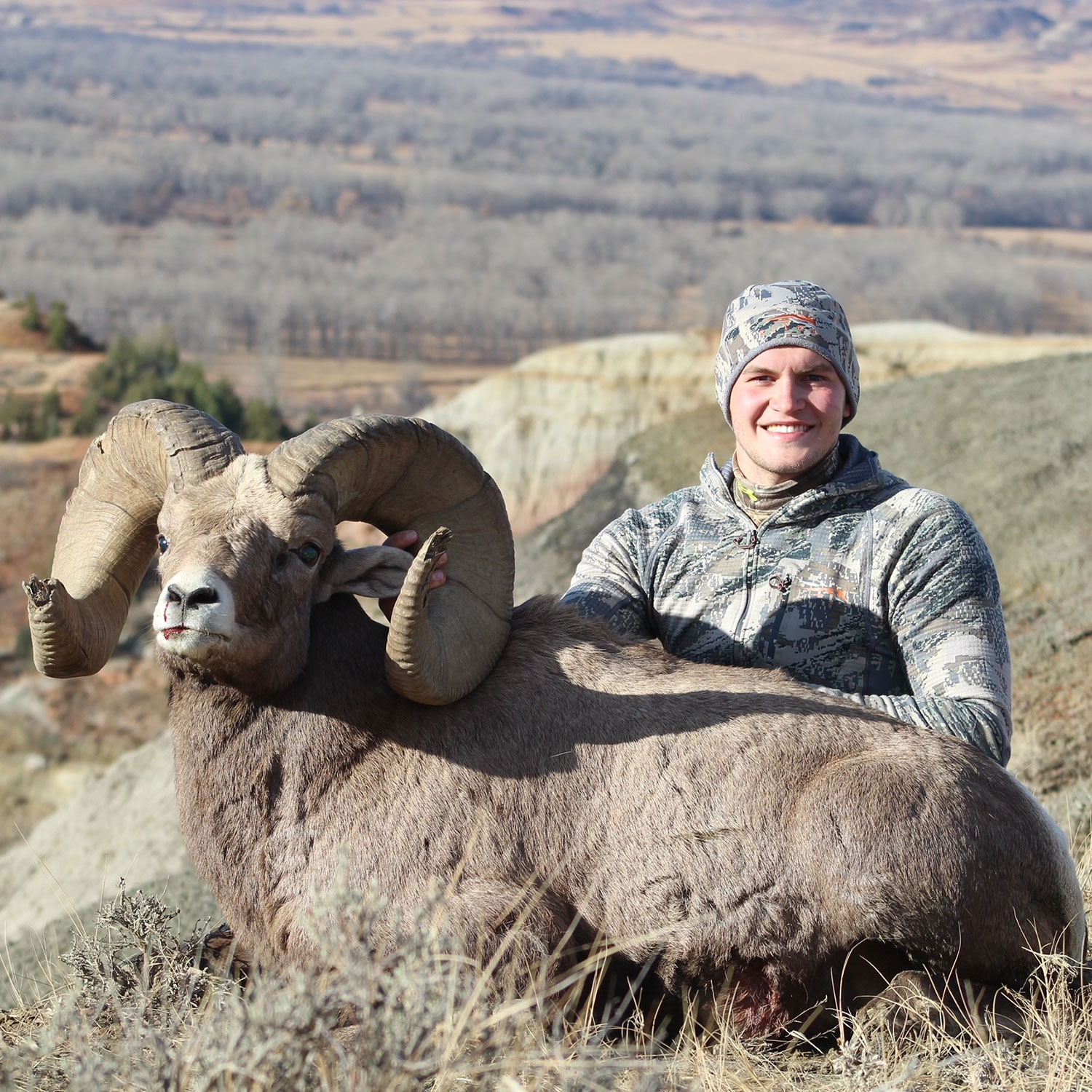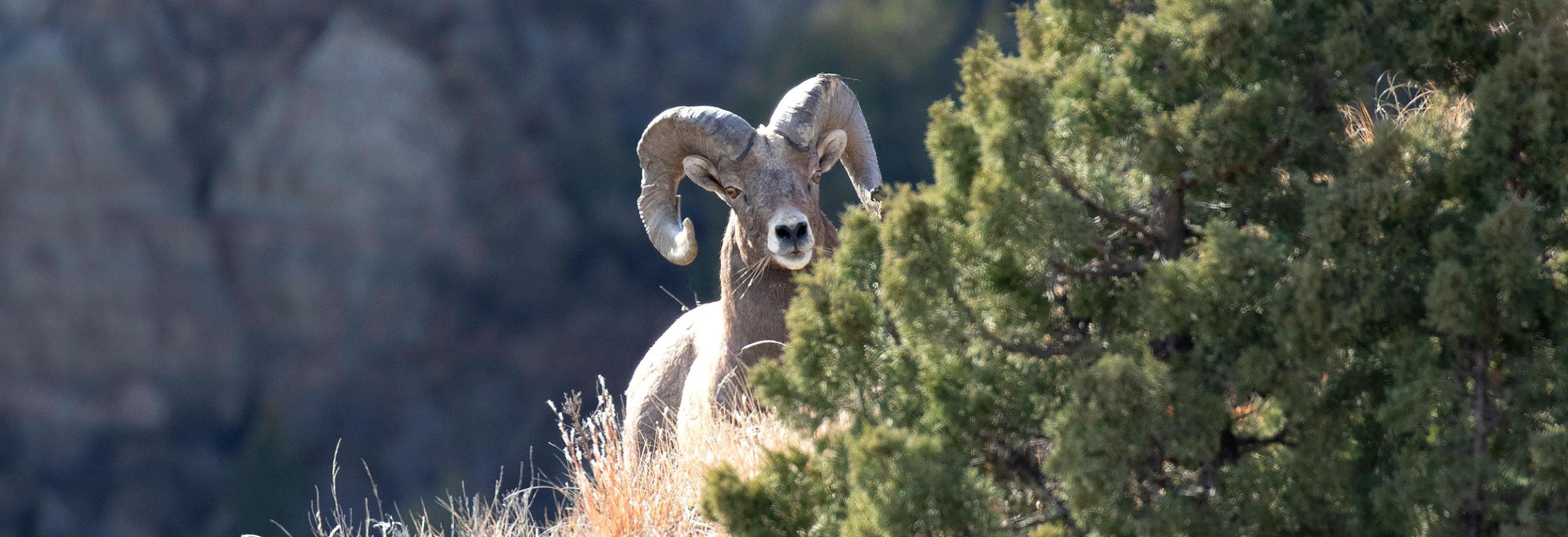There are likely more bighorn sheep sure-footing their way along the rugged and equally gorgeous badlands in western North Dakota today than in the last 150 years.
Equipped with concaved, sharply edged hooves to grip the slightest footholds, these animals are certainly on solid ground.
“The last native bighorn confirmed in the state was killed in 1905 at Magpie Creek,” said Brett Wiedmann, North Dakota Game and Fish Department big game management biologist. “And we know that in the late 1800s Theodore Roosevelt hunted bighorns in North Dakota and killed a bighorn at Bullion Butte, but the animals were scarce by then.”
Currently, between the population managed by Game and Fish, which totals about 330 animals, and those managed by the National Park Service and Three Affiliated Tribes, Wiedmann said the overall bighorn sheep population is getting closer and closer to 500 bighorns.
Bighorn sheep in North Dakota are a success story. When you think about it, there was only a 50-year gap between the time when the last confirmed bighorn was killed at Magpie Creek to their reintroduction by Game and Fish in 1956.

Surefooted bighorn sheep don’t have any issues negotiating the rugged up and down landscape in the badlands.
“A lot of credit goes to Game and Fish staff back in the mid-1950s,” Wiedmann said. “We were one of the first states the bighorns were extirpated, and they took the initiative way back then to reintroduce that species. And since then, it’s just been a progression of introducing bighorns to the badlands.”
The turning point, certainly, was when Game and Fish introduced bighorns from Montana to the badlands in 2006 and 2007.
This is what Wiedmann had to say in 2006 about bringing bighorns in from Montana: “You try to find the closest match in terms of habitat that you can, and this is the first time since 1956 that we’ve transplanted bighorn stock from habitat so similar to ours. Bighorn sheep are creatures of habit, so this is important. Our hope is that when the sheep jump out of the trailer, they realize the badlands offer the same grasses they’re used to eating, it’s the same clay soils they’ve walked on … it’s just like home.”
Wiedmann today: “A real catalyst is when we introduced those bighorns from Montana. They are just perfectly adapted to our cold winters, and they have done so well as far as adult survival, lamb survival and population growth. They're really just taking off.”
Life for bighorn sheep in the badlands isn’t simply feeding on secluded grassy plateaus and living large. Like for many big game animals, life on the Northern Plains can be difficult.
“A common issue and challenge throughout the United States and Canada is disease from introduced pathogens that cause pneumonia, and we had an outbreak in 2014,” Wiedmann said. “Fortunately, that strain of Mycoplasma was not as virulent as feared. We lost 15-20% of our adult population. Lamb recruitment was suppressed for a few years, but now it has come back, now we have very good recruitment.”
The strain is still in the population, Wiedmann said, because he noticed a few lambs coughing during this year’s summer survey.
“But despite that, we're still seeing pretty encouraging population growth,” he said.
Pneumonia in a bighorn population can have a greater impact than the outbreak in 2014. The state’s bighorn population south of Interstate 94 was hit hard by pneumonia in the late 1990s and just never recovered.
Game and Fish introduced bighorns south of the interstate three or four times since then, but both adult and lamb survival have been very low.
“About 10 years ago, we just decided there'd be no management actions in the southern badlands because the sheep just can't work the pathogens out of this population,” Wiedmann said. “The ultimate goal long-term would be to depopulate the entire southern badlands and then reintroduce healthy bighorns and start over again.”
Wiedmann started working with the agency’s bighorn sheep program in the early 2000s and never thought the state’s population would be where it’s at today.

Sawyer Burchill, Hunter, N.D., with the state’s number 2 bighorn ram shot in 2020.
“Honestly, it was pretty discouraging. After the die-off in the southern badlands in the late 1990s, there was a lot of talk in the Department about maybe giving up on bighorns because they're just so much money, such an investment, and the population was declining because of die-offs,” he said. “So no, I didn't think we'd be seeing the type of bighorn numbers we’re seeing today. It's really encouraging that they're doing so well. To see big groups of 35-40 bighorns together, when for years it was five or six in a herd, it's encouraging.”
The Game and Fish Department manages the bighorn sheep population primarily for hunters. The state held its first hunting season in 1975 and about 260 rams have been harvested in nearly a half-century.
The Department allocated five bighorn sheep licenses for the 2021 hunting season. A record 19,126 applicants applied for the once-in-a-lifetime licenses.
While it’s only a guess how this fall’s season will play out, it will be difficult to compare to the 2020 bighorn season.
“In 2020, hunters shot the new number one, number two and number five all-time bighorns in the state, so it was an incredible year,” Wiedmann said. “Again, that's the result of these Montana genetics. They're just a bigger bodied, bigger horned animal. And the rams were actually young … all three were only 7 years old and that's not a real old ram. We typically want them harvested at 8 to 10. They were just three tremendous rams, and we still have some real nice up-and-comers as well.”
Wiedmann added that those 2020 bighorns made up the youngest group of rams harvested in North Dakota in 26 years.
During some of the first bighorn hunting seasons in the late 1970s, Department personnel accompanied hunters in the field. Today, and for years, the once-in-a-lifetime hunts are DIY.
“Hunters now just meet with me, and we’ll sit down with a map and kind of show them those areas where bighorns inhabit and then hunters got to go out and find them,” Wiedmann said. “The season occurs during the rut, so the rams are much easier to find than back 10-20 years ago when the season was in September.”
Hunter success today is typically 100%. The 2021 season runs from Oct. 29 through Dec. 31.
The Department auctions one bighorn sheep license annually through the Midwest Chapter of the Wild Sheep Foundation, from which all proceeds are used to enhance bighorn sheep management in North Dakota.
“This year our auction license sold for a record $135,000. That money is well used for GPS collars, airplane time, gas for the pickup, all the survey gear … bighorns really fund their own management within the state,” Wiedmann said.

David Suda, Grafton, N.D., with the state's number 1 bighorn ram shot in 2020.
There have long been some misconceptions concerning the sheep auction hunters in North Dakota.
“The only advantage the auction hunter has is that they can hunt in all open units, where the lottery hunters must stick to their hunting unit,” Wiedmann said. “And, no, we do not tie the biggest ram in the state to a tree for the auction hunter. There is no favoritism in that regard. In fact, in the vast majority of hunting seasons, the largest rams are taken by resident hunters. In 2020, the three big rams all were taken by resident hunters who drew those tags.”
Drought Tolerant
While biologists lament the negative influences of an ongoing drought on fish and wildlife in North Dakota, Brett Wiedmann, Game and Fish Department big game management biologist, doesn’t worry about the hot, dry weather impacting bighorn sheep in the badlands.
“Bighorns are adapted to dry climates, so it does not affect them very much. I just finished a summer count of bighorns and had a record summer lamb count. I counted 76 lambs, so they're very well adapted to drought,” Wiedmann said. “However, what was strange is the bighorns we released on the reservation, we actually found one ram that was stuck in the mud trying to get to the water in the Little Missouri Arm and died. I never would have dreamt that with all that water, that the sheep couldn't get to it.”
Nature is a cruel place sometimes, Wiedmann said.
“For the most part, the bighorns know where these little seeps of water are located,” he said. “But unlike some other species, drought isn’t an issue for bighorns.”




